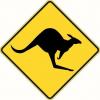Hi Everyone, I have been thinking about Fret Saws and have read here and other places about how people really like your high end Fret Saws. I cant understand the difference between a $100 saw and a $20 Saw. Is it the ease of blade change, or the Stiffness of the blade because of the rigidity of the saw frame, I think it must be because of the rigidity..... but not sure as I am not an everyday user. Block planes I would like to understand if the ergonomic feel of the body is what is the Key or if the Blade adjustment is what is critical or is the l am a surgical Instrument maker by trade and a Mechanician for a University and I teach a Mechanical Design Class For Grad Students and one for undergrads. I am thinking of putting them on to the problem of Fret Saws and Block planes, So I would welcome your thoughts on Fret Saws and Block Planes. Thanks for any Help on this subject. -matt




 Reply With Quote
Reply With Quote



